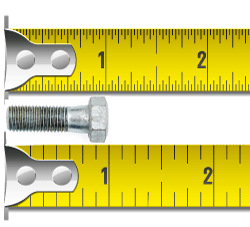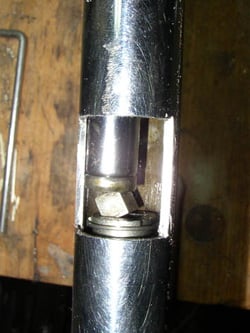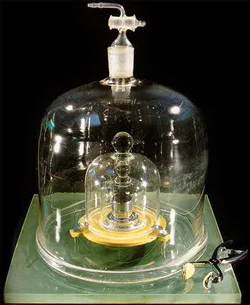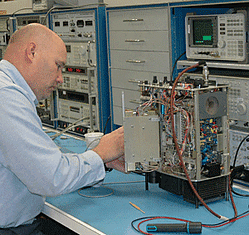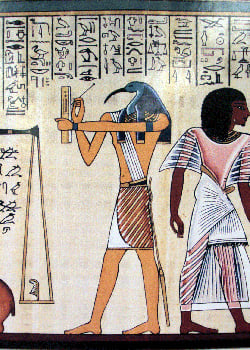 Hanging in Duncan Aviation's Calibration Services Lab is a poster about the History of the Egyptian Cubit. It depicts the beginning of tool calibration more than 5,000 years ago. Many similarities to modern calibrations still remain.
Hanging in Duncan Aviation's Calibration Services Lab is a poster about the History of the Egyptian Cubit. It depicts the beginning of tool calibration more than 5,000 years ago. Many similarities to modern calibrations still remain.
It is believed that around 3,000 B.C. the Egyptian unit of length was established. The Royal Egyptian cubit was decreed to be equal to length of the forearm from the bent elbow to the tip of the extended middle finger plus the width of the palm of the hand of the Pharaoh ruling at the time. The Royal Cubit Master was carved from a block of black granite to endure for all time (the equivalent of today’s primary standard).
Workers building tombs, temples and pyramids were supplied with cubit sticks made of wood or granite. The Royal Architect or foreman of each construction site was responsible for maintaining and transferring the unit of length to the workers’ cubit sticks (modern tool calibration). It was required that the cubit sticks be brought at each full moon (calibration cycle) to be compared to the Royal Cubit Master to ensure their accuracy. Failure to do so was punishable by death (OK…some things have changed).
The strict accuracy of the cubit is why many magnificent structures, such as the Egyptian pyramids, survive today. Egyptians took their metrology very seriously and as a result, their measurement accuracy was impressive. Over a distance of 230 meters, measurements typically varied by only 0.05%.
Maintaining tool accuracy through periodic tool calibrations remains extremely important to guarantee a unit or measure can transfer from one aircraft to another and one country to the next.
The next time you reach for that torque wrench or micrometer, ask yourself, “am I getting the most accurate reading I need? How do I find out?”
Duncan Aviation Calibration Services
Duncan Aviation’s Calibration Services use NIST traceable standards to calibrate measuring & test equipment (M&TE). Bring your tools with you the next time your business aircraft is serviced at one of our full-service maintenance facilities. They will be returned to you when you are ready to leave, properly calibrated and ready for use.
Can’t be long without your tools? Send them to us and we’ll have them back to you in fewer than five days.
Calibration Services
- Certified to ISO/IEC 17025:2005
- Certified ASQ-CCT technicians
- Calibration data available
- Repair capabilities on most M&TE
For a complete list of our calibration capabilities, download the Duncan Aviation Calibrations Fact Sheet.





